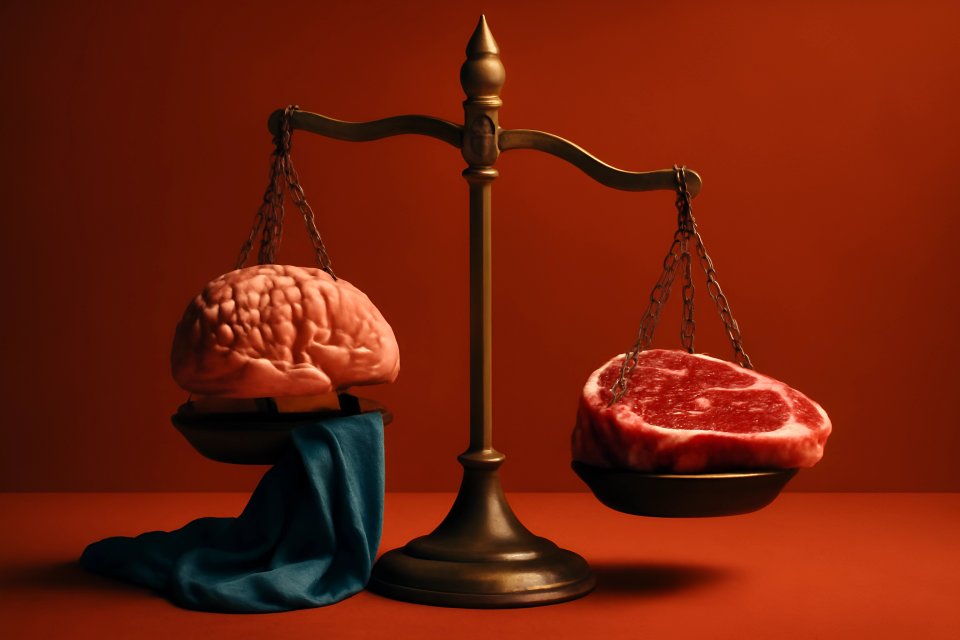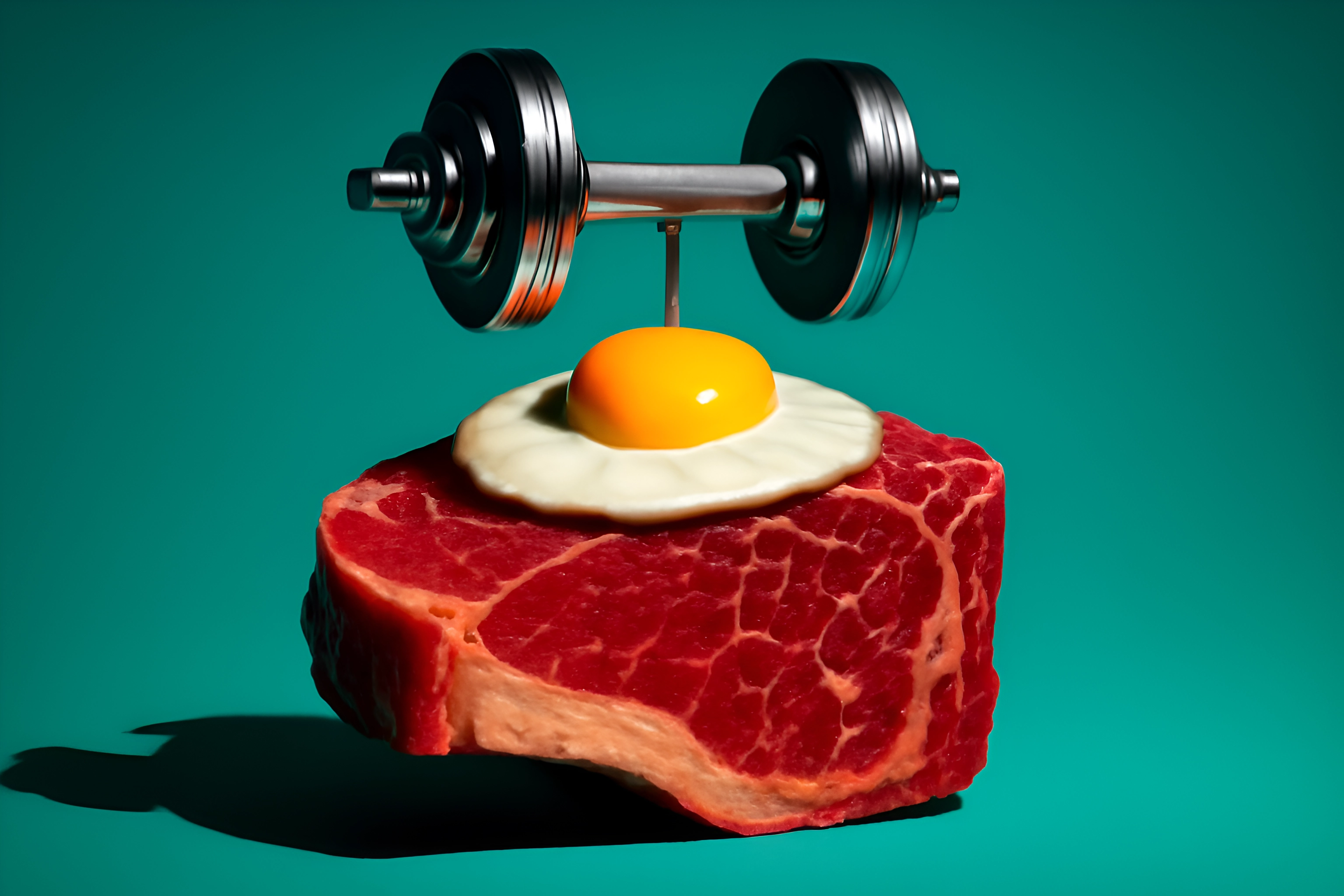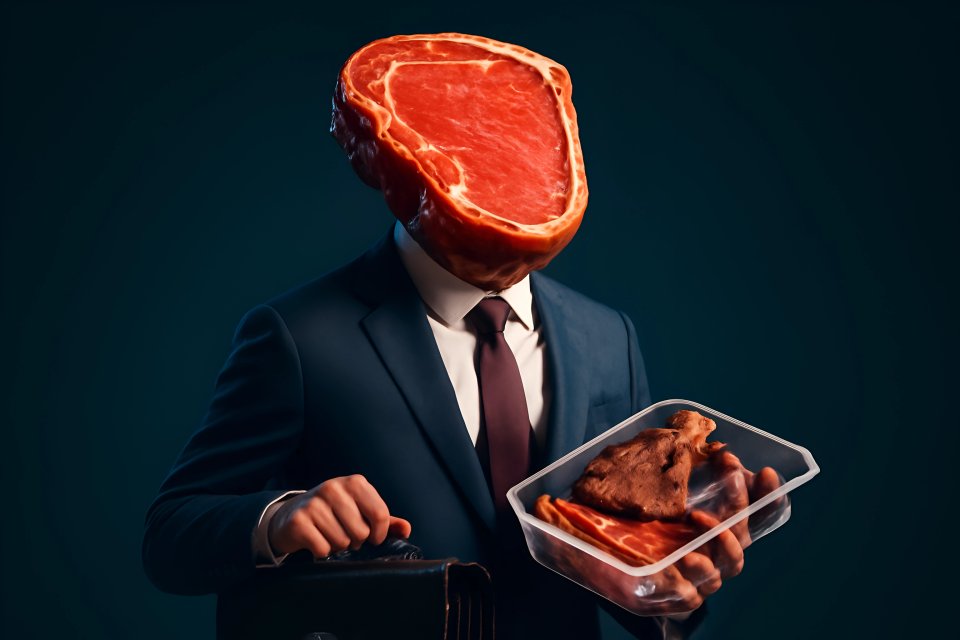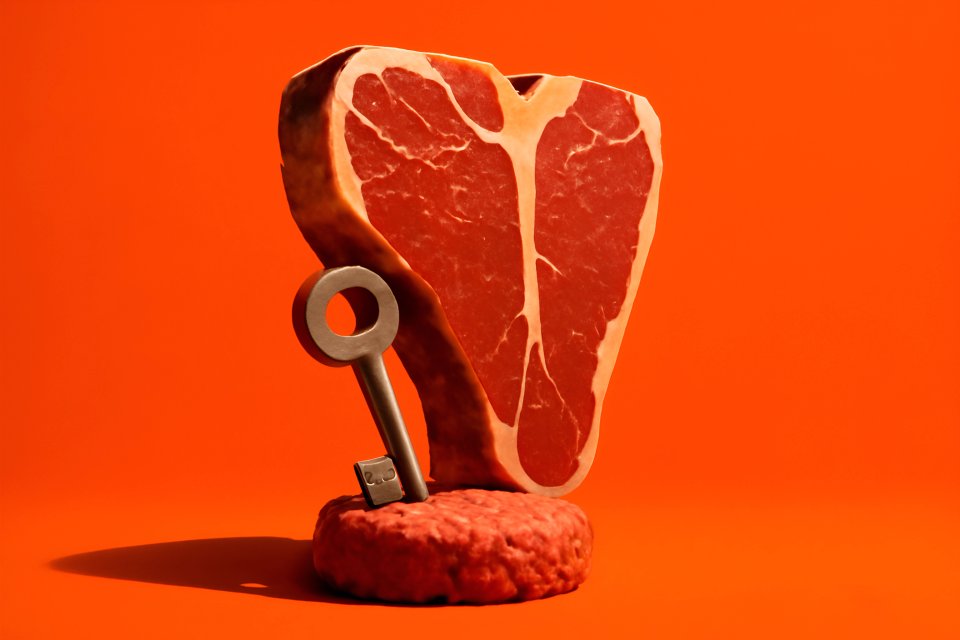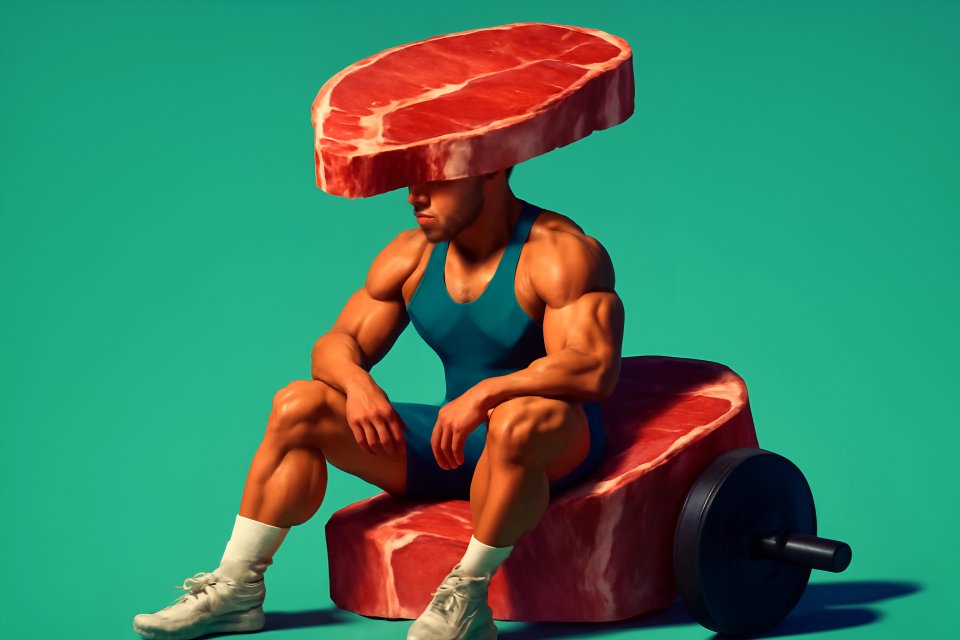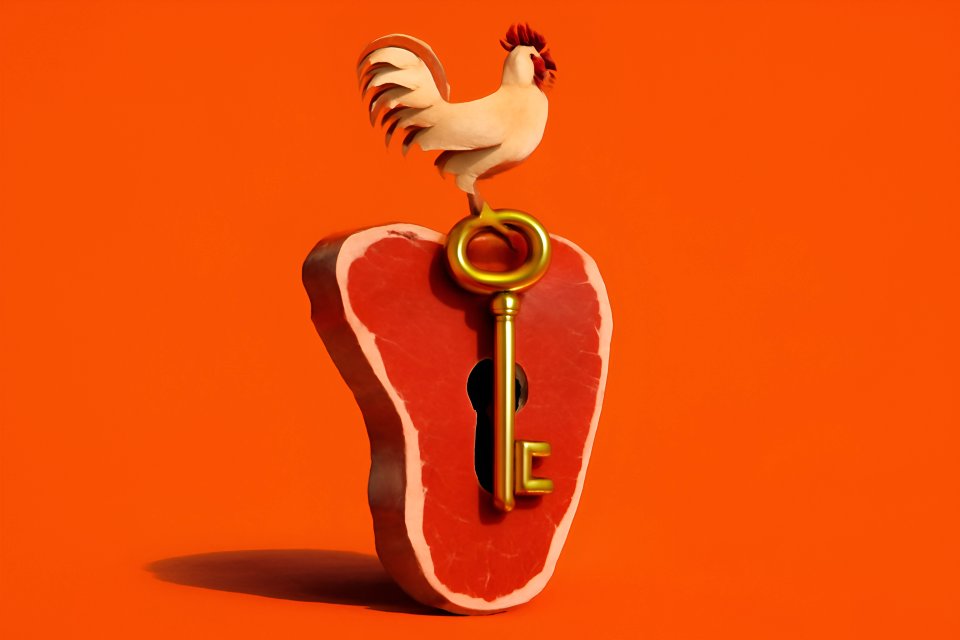
You’ve done the hard part. You’ve ditched the processed junk, the sugar, the inflammatory plant foods. You're eating nose-to-tail, embracing the ancestral power of meat. But you still hit that 3 PM wall like a ton of bricks. Or maybe your energy feels inconsistent, a frustrating rollercoaster even on a diet praised for its stability. What gives?
The secret isn't in what you're eating anymore. You've already mastered that. The next level of optimization, the key to unlocking the vibrant, consistent energy this way of life promises, lies in when you eat. This is the missing piece of the puzzle that separates those who merely survive on carnivore from those who truly thrive.
This guide is your no-BS roadmap to understanding and implementing nutrient timing on a carnivore diet. We're going to cut through the noise and give you practical, actionable strategies to reclaim your energy, sharpen your mental focus, and supercharge your body's healing journey. Get ready to take back control.
What is Nutrient Timing, and Why Does it Look Different on Carnivore?
In the conventional world of nutrition, "nutrient timing" is almost always about one thing: carbohydrates. It’s about slamming a sugary drink before a workout or shoveling down pasta afterward to "refill glycogen stores." But what happens when you remove carbs from the equation entirely? The entire rulebook gets thrown out the window, and a much more powerful, intuitive system takes its place.
On a carnivore diet, nutrient timing isn't about managing a volatile, quick-burning fuel source. It’s about strategically timing your intake of fat and protein to work with your body's incredibly efficient, fat-adapted metabolism. A 2021 survey of over 2,000 carnivore dieters found that followers reported high levels of satisfaction and significant improvements in overall health, which is a testament to the metabolic stability this diet provides. By mastering meal timing on a carnivore diet, you are simply enhancing the profound benefits you're already experiencing.
The goal is no longer to avoid a sugar crash; it's to create a state of unshakable, sustained energy carnivore style. This means maintaining stable blood sugar and insulin levels all day long, providing a steady stream of fuel (ketones and fatty acids) to your brain and body, and optimizing digestion by giving your gut periods of rest. It’s about providing the raw materials for muscle repair and robust hormone production precisely when your body needs them, a concept further explored in our guide to animal-based nutrition for hormone balance and energy.
The Science Simplified: How Your Body Creates Stable, All-Day Energy
Forget everything you've been told about needing carbs for energy. Imagine your metabolism is a fire. Carbohydrates are like throwing kindling and paper on it—you get a big, bright flare-up followed by a rapid burnout, leaving you cold and searching for more fuel. This is the cycle of energy spikes and crashes that defines a standard diet.
Fat and protein, the cornerstones of the carnivore diet, are different. They are the dense, heavy logs. When you place a log on the fire, it doesn't flare up wildly. It catches slowly, providing a deep, consistent, and long-lasting heat that warms you for hours. This is the kind of energy your body is designed to run on—steady, reliable, and powerful. As explained by Harvard Health Publishing, low-carb diets shift the body to use fat as its primary fuel, a far more stable and abundant energy source.
But what about the small amount of glucose your body does need for certain functions? This is where the magic of gluconeogenesis (GNG) comes in. Don't let the big word scare you. GNG is a calm, demand-driven process where your liver creates the precise amount of glucose required from protein. It's not a runaway train that kicks you out of ketosis; it's a highly regulated, intelligent system that ensures your body has everything it needs to function at its peak, without the rollercoaster of external sugar.
The 4 Core Principles of Carnivore Meal Timing
Principle 1: Find Your Meal Frequency Rhythm (OMAD vs. TMAD vs. 3 Meals)
There is no one-size-fits-all answer to how often you should eat. The goal is to find a rhythm that fuels your life, not dictates it. For many, TMAD (Two Meals a Day) is the sweet spot. It provides a significant fasting window (typically 16-18 hours) to promote gut rest and cellular cleanup (autophagy) while making it easy to consume adequate calories and nutrients without feeling uncomfortably full.
For those seeking deep healing and ultimate simplicity, OMAD (One Meal a Day) can be a powerful tool. A 23-hour fast followed by a single, large, nutrient-dense meal can amplify the benefits of autophagy and give your digestive system a profound rest. However, it can be challenging to get enough fuel in one sitting, especially for athletes or highly active individuals. If you're new to these concepts, our beginner's guide to carnivore diet fasting is the perfect place to start.
On the other end of the spectrum, eating three or more smaller meals is perfectly acceptable, especially for beginners transitioning away from a high-carb lifestyle. It can also be beneficial for those with extremely high energy demands or individuals who struggle with large meals. The key is to listen to your body's signals of hunger and satiety and adjust accordingly.
Principle 2: Fueling for Performance (Pre-Workout Timing)
Want to crush your workouts? The carnivore approach to pre-workout fuel is elegantly simple. The most popular and often most effective method is training in a fasted state. When you are fully fat-adapted, your body can readily tap into its stored body fat for energy, a process that can enhance fat burning and may even increase the release of growth hormone.
However, some people simply feel and perform better with a little fuel in the tank. If that's you, the key is to avoid a large, heavy meal that will divert blood flow to your stomach instead of your muscles. A small, easily digestible fat-and-protein primer about 90-120 minutes before your session is ideal. Think a couple of egg yolks, a small beef patty, or a few slices of bacon. This provides readily available fatty acids and amino acids without weighing you down, perfectly integrating movement with your carnivore eating for maximum results.
A 2024 case study in the Journal of Exercise and Nutrition highlighted how targeted nutrient intake around training can significantly impact performance. While the study explored adding small amounts of carbs for elite athletes, the underlying principle holds true: timing your fuel source, whether fat or protein, is key to athletic success.
Principle 3: Optimizing Recovery (Post-Workout Timing)
The fitness industry has terrified people with the myth of the "anabolic window"—the idea that you must consume a protein shake within 30 minutes of your last rep or all your gains will vanish. On a carnivore diet, you can relax. Because you're providing your body with a steady stream of high-quality amino acids throughout the day, that frantic 30-minute window becomes far less critical.
What matters more is your total daily protein intake and refueling within a reasonable timeframe. A comprehensive 2024 review in Frontiers in Nutrition confirms that the most crucial period for enhancing muscle repair is within 1-3 hours post-exercise. This is the ideal time to consume your largest, most protein-dense meal of the day.
Your carnivore recovery meal should be centered around high-quality protein like steak, ground beef, or fish to provide the essential building blocks for muscle protein synthesis. Crucially, don't skimp on the fat. Including plenty of tallow, butter, or fatty cuts of meat is vital for replenishing the energy you just expended. For a deeper dive, explore our specific strategies for carnivore diet athletic recovery.
Principle 4: Timing for Mental Clarity and Deep Work
One of the most celebrated benefits of a carnivore diet is the crystal-clear mental focus it provides. You can amplify this effect by strategically timing your meals around your most demanding cognitive tasks. Many people discover a state of heightened focus and productivity when working in a fasted state. Fueled by brain-loving ketones, the mind becomes sharp, distractions fade away, and deep work becomes effortless.
The strategy is simple: schedule your most important mental work for the morning or during your fasting window. Then, schedule your first or largest meal for after that block of work is complete. This allows you to leverage that clean, fasted energy without experiencing the slight lethargy or "brain fog" that can sometimes follow a very large meal as your body diverts resources to digestion.
This approach directly taps into the benefits reported by long-term carnivore followers, who often cite improved mental well-being as a primary advantage. By aligning your eating schedule with your cognitive demands, you are not just eating for physical energy, but for peak mental performance. You can learn more about using carnivore fasting for enhanced mental clarity in our dedicated guide.
Putting It Into Practice: Sample Carnivore Timing Schedules
Disclaimer: These are templates, not rigid rules. The most important principle is to listen to your body's unique signals of hunger, energy, and satiety. Use these as a starting point and adjust to find what makes you feel your best.
| Persona Goal | Morning | Midday | Evening |
|---|---|---|---|
| The 9-to-5 Professional (Focus on sustained energy & mental clarity) |
Fasting with water/electrolytes. Deep work session. |
12:00 PM: First Meal Example: 1 lb ground beef with butter. |
6:30 PM: Second Meal Example: Ribeye steak with eggs. |
| The Athlete/Active Individual (Focus on performance & recovery) |
6:00 AM: Pre-Workout Primer Example: 2-3 egg yolks. 7:00 AM: Workout. |
9:00 AM: Post-Workout Recovery Meal Example: Steak, ground beef, liver. |
5:00 PM: Second Meal Example: Salmon with bacon. |
| The Healer on OMAD (Focus on gut rest & autophagy) |
Fasting with water/electrolytes. | Fasting. | 5:00 PM - 6:00 PM: One Large Meal Example: Variety of meats, organs, fat. |
Common Pitfalls to Avoid
Mastering nutrient timing is a journey of self-experimentation, but there are a few common traps to watch out for. The biggest mistake is ignoring your body's signals. If you are genuinely, ravenously hungry, eat. Forcing a fasting window when your body is screaming for fuel, especially when you're new to the diet or for women whose hormonal cycles can influence hunger, is counterproductive.
Another critical error is undereating fat. Fear of fat is deeply ingrained, but on a carnivore diet, fat is your primary energy source. If you feel consistently low on energy, lethargic, or too lean, you are likely not eating enough fat. This forces your body to rely too heavily on converting protein to glucose (GNG), which is a more metabolically expensive process and can lead to "rabbit starvation" symptoms.
Finally, be mindful of eating too close to bedtime. While individual tolerance varies, many people find that finishing their last meal at least 3-4 hours before sleep leads to dramatically improved sleep quality. This gives your digestive system time to do its work, allowing your body to focus on deep, restorative rest overnight. For more tips, check out our guide on the carnivore diet and restorative sleep.
Conclusion: Your Body is the Ultimate Timing Device
Let's bring it all home. Nutrient timing on a carnivore diet is not about complex formulas or rigid clocks. It's about shifting your mindset from chasing the quick highs of carbohydrates to building the slow-burning, rock-solid foundation of fat and protein. It's about leveraging meal frequency and timing to support your unique goals, whether they be peak athletic performance, laser-sharp mental focus, or deep cellular healing.
The most powerful tool you have in this journey is your own biofeedback. Pay attention. How is your energy? Your mood? Your sleep? Your digestion? These are the data points that matter. Experiment with the principles in this guide, connect with the wisdom of traditional carnivore eating practices, and find the rhythm that transforms your health from good to exceptional.
What has been your experience with meal timing on the carnivore diet? Share your biggest win or challenge in the comments below—let's learn from each other!
Frequently Asked Questions (FAQ)
Q: Do I need to eat right after a workout on the carnivore diet?
A: Not necessarily. While it's beneficial to have a high-protein meal within a few hours to support recovery, the frantic 30-minute "anabolic window" is largely a myth in the context of a carnivore diet. Your total daily protein and fat intake are far more critical for muscle repair and growth.
Q: How does meal timing affect sleep on a carnivore diet?
A: It can have a significant impact. Many people find that finishing their last meal at least 3-4 hours before bed improves sleep quality. This allows digestion to be largely complete, so your body can dedicate its resources to restorative processes during sleep.
Q: Is OMAD better for sustained energy?
A: It can be for some, but it's highly individual. For many fat-adapted individuals, a 23-hour fast leads to incredible mental clarity and stable energy. For others, particularly athletes or those with higher energy needs, TMAD (Two Meals a Day) provides more consistent energy by splitting the nutrient load.
Q: What if I get hungry between my planned meals?
A: Listen to that signal, especially when you are starting out or after a particularly demanding day. Persistent hunger between meals is often a sign that you didn't include enough fat in your previous meal. Have a fatty snack like a few pieces of bacon, a spoonful of tallow, or some pork rinds, and make a note to add more fat to your next scheduled meal.
